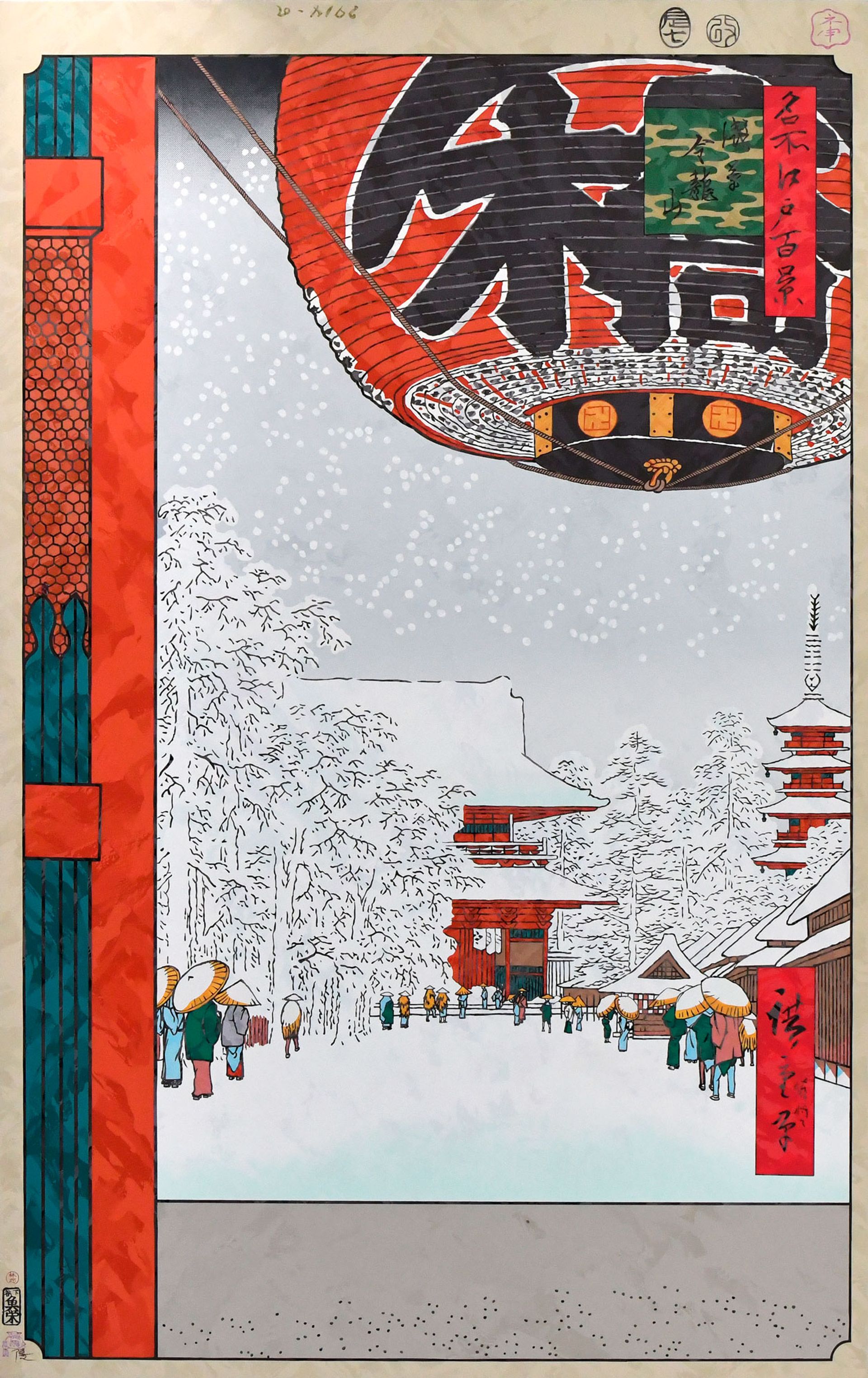Will your visit to New York’s Brooklyn Museum soon have a soundtrack? Earlier this month, 27-year-old cellist Niles Luther began his tenure as the Brooklyn Museum’s first composer-in-residence, where he composed the score for the institution’s latest exhibition , Hiroshige’s 100 Views of Edo (Takashi Murakami). But he wanted to go further. “Just as most movies in cinemas did not have musical scores before the 20th century, most works of art in galleries and museums today do not have musical scores,” he said. The Art Newspaperadding that art can and should.
He calls it his own genre, “art music.” “Previously, the term art music was used to describe music with high sonic aesthetic value…such as classical music or jazz music,” he said. “I am pushing this definition forward by anchoring works of high sonic aesthetic value in visual art objects, thereby advancing the genre.” Indeed, while museums often function as venues for composers, few Be integrated into the institution and directly tasked with responding to the works in its collection. However, there was a recent example that impressed Luther: “The Louis Vuitton Foundation recently commissioned the famous German composer Max Richter to respond to an exhibition of paintings by Mark Rothko. I am deeply Deep admiration for the painter and composer and delighted to see something like this happening on a global stage, with the support of such a talented artist and such an important cultural institution, he said.

Utagawa Hiroshige’s Kinryuzanji Temple, Asakusa (1856), Hiroshige’s One Hundred Views of Edo (feat. Takashi Murakami) Courtesy of the Brooklyn Museum
Rudd’s works in this exhibition include responses to three prints by Japanese artist Utagawa Hiroshige: On New Year’s Eve, the changing fox fire of the Prince’s Tree (1857), Chiyoike, Meguro District (1856) and Kinryuzanji Temple, Asakusa (1856). The public can listen to the audio through the Bloomberg Connects app.In a soundtrack produced for the Brooklyn Museum, Rudd said he collaborated with “Japanese traditional instrumentalists” to combine the “Western European classical tradition” and its accompanying instruments (in this case, violas, violins and cellos) with Japanese music Combined with practice, learn from “popular in [the country] Edo period”.
After training as a cellist, Luther actually began working in the arts as a composer. “Working as music director at Kehinde Wiley Studio was my start as a composer,” he said The Art Newspaper. Luther “had never composed anything before working with him” [the artist] but [had] Recorded cello scores for several of his art film installations”. “My first composition was for his film score Tahitidebuted at Galerie Templon in Paris in 2019.
In 2021, Luther collaborated with Wiley on ” prelude, which was exhibited at the National Gallery, London. “This is an incredible score by a young composer named Niles Rudd. I’m fascinated by this music and hope we can collaborate on other projects in the future.” Willie told A brush… Then-podcast host Ben Luke. However, “While working in his studio, I realized that I was less interested in composing music for moving images (movies) and more interested in scoring still images (paintings),” Niles said. Rudd nonetheless attributes his success to the artist: “Kehinde Wiley is the reason why I am the composer I am today; he gave me the opportunity to develop my artistic voice, to transcend the traditional forms of the Western canon and explore new Musical vocabulary, which has become the cornerstone of my practice today.
The composer-in-residence position is funded by the Ford Foundation, a private foundation founded by the billionaire automobile family and currently governed by a chairman elected by the board of directors (including current Ford Motor Company director Henry Ford III and philanthropist Low Ron Powell Jobs). Under chairman Darren Walker, the foundation has allocated significant funding to the arts, including documentary filmmaking grants and “cultural development in urban and rural America,” according to its website.
Rudd’s residency will involve exploring “different ways in which art music interacts with visitors: live performance, recorded music on Bloomberg Connect, and full-blown immersive audio installations,” he said. “The purpose of this residency is to leverage the institutional support I have received to position art music on the global stage, cementing its relevance and criticality as a new musical genre, thereby profoundly enhancing the experience of viewing art.” He said at The Brooklyn Museum’s term runs through November 2025.

